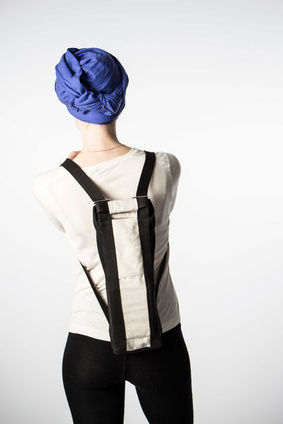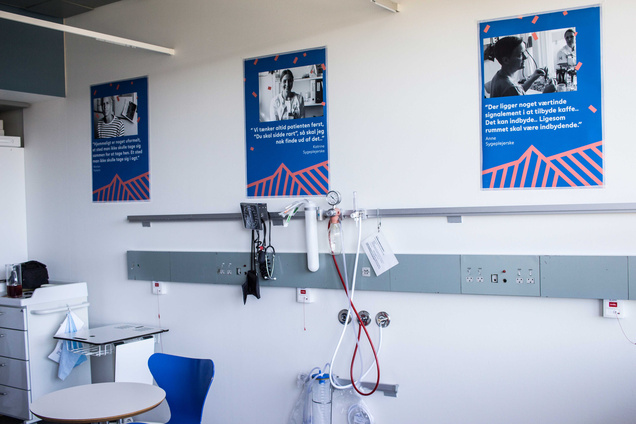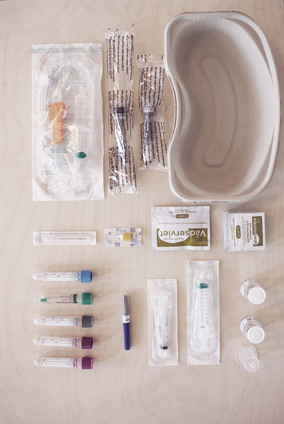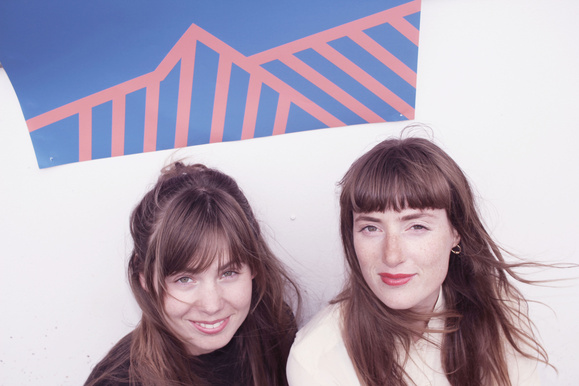Meet Rie Maktabi and Isabel Aagaard, two new graduate designers from the Co-design programme at the Royal Danish Academy of Fine Arts, School of Design. In their final joint project, ‘Chemo to go, please’, the two designers focused on how to make life better for Leukaemia patients. With portable chemo treatment, a patient website and a design guide to a treatment room, the two designers created a more ‘homey’ patient experience. The project was a collaboration with Copenhagen University Hospital and Odense University Hospital. It has also become part of the Danish Design Centre’s platform, DesignHealth, which aims to inspire other designers to work with the health sector.
You call your final project ‘Chemo to go, please’. Why?
When we started our working process, the concept was home treatment: for example, a chemo patient staying at home for his or her treatment instead of a hospital. We wanted to instigate the concept with Danish hospitals. Home treatment means that patients have greater responsibility for the practical part of their treatment and are allowed, as far as possible, to be in safe, familiar surroundings. Experience shows that home patients are more active, see their friends and family more, eat more, sleep better and get fewer infections. That means that they get better more quickly than patients who are hospitalised during their chemo treatment.
But the design element needed to get the concept off the ground was missing, so we saw a golden opportunity to use co-design methods, which are particularly effective when it comes to tackling complex problems.
Through a process, in which we involved patients, relatives and hospital staff, we developed a design guide for a chemo-to-go-treatment room, which takes into account the working procedures of the staff and creates a pleasant setting for waiting in. We also looked at how the hospital could ‘come home’, using a patient information website to create a sense of security and readiness for the next hospital visit. In collaboration with two of our fellow students Melanie Povlitzki and Xenia Geller we had previously designed a portable chemo bag allowing a patient much more mobility when in treatment.
In what way do you imagine your final project will make a difference?
Our final project is going to make a big difference for patients who get their chemotherapy at home. By designing a website for patients with everything there is to know about the form of treatment, we can provide them with a sense of peace and security. For example, on the website we include guidance videos, in which patients show how to take your own blood tests. This information was previously provided on paper and communicated from a nurse’s point of view. The project will also make a difference for hospital staff by taking into account their needs on an equal footing with those of the patient. That means, for example, that the Chemo-to-Go treatment room is adapted for all working procedures, making it a cohesive and efficient treatment experience for both patients and health care providers.
You can see development/job opportunities in your project?
Chemo-to-Go is already a form of treatment, which is being implemented in Danish hospitals, and there has already been interest from abroad. We see our design guide as an opening for us and other designers to develop components for improving the service journey for home treatment.
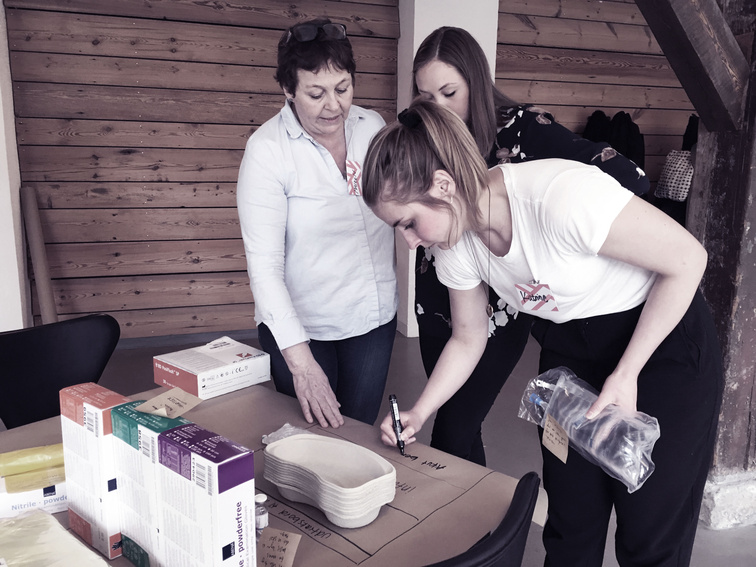
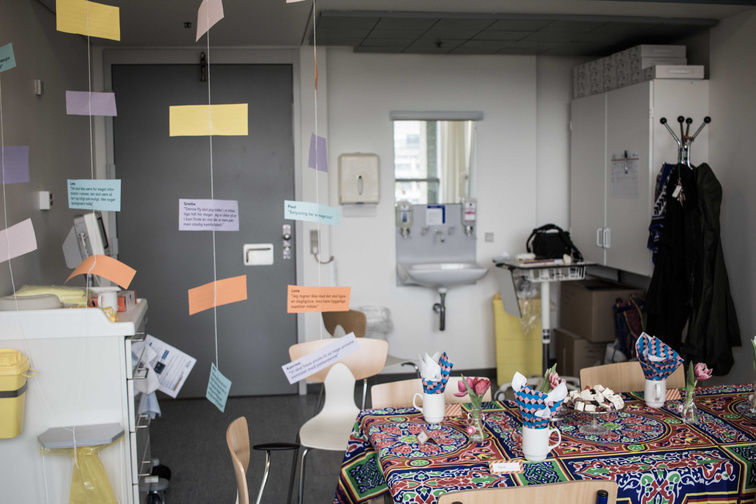
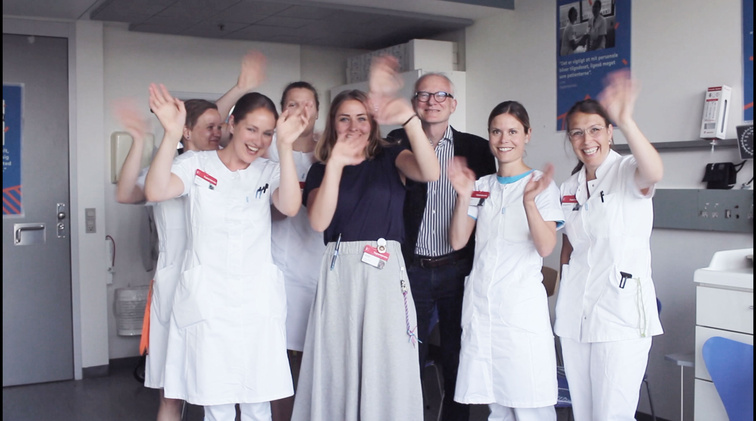
What are the most enjoyable and the most difficult aspects of designing the way you do?
Co-design is a new kind of design, which means that not many people are familiar with our way of working. So it can take quite a long time to establish confidence in the people we work with. We also demand more of our collaborators than other designers, because our collaborators are involved in every stage of the design process.
In co-design, you start with a very open issue, without knowing in advance where you will end up. It can be difficult for our collaborators to understand that we cannot immediately identify the goal. We can only assure them that this openness will achieve the best solution. The fact that you do not know what may be waiting around the next corner is slightly nerve-racking. But there is also a certain degree of excitement associated with that uncertainty. That gives us a kick!
The really hard part occurs when you have been observing and making prototypes long enough and it is time to put everything together. Sometimes you have so many diverse insights and it takes a long time to weave them all together.
What is fun is tying all the ends together and arriving at a pattern. Suddenly, you can see what design measures are called for to realise the project. Designing the final solution is great fun, because you can actually hear all the voices that have been involved in the project. There is a special feeling of happiness, when you deliver a project like this to the users you have been working with. They can take our design and make it a direct part of their lives.
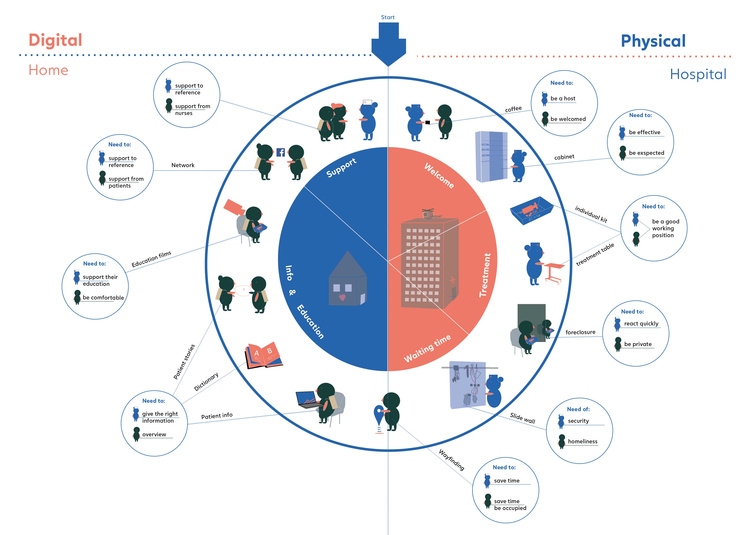
If you were to identify a design, which you would have loved to design, what would it be, and why?
We are inspired by projects that have succeeded in improving the health sector. For example, Coloplast’s colostomy bags and Khora’s virtual reality initiative in children’s wards, allowing children with a long-term illness to visit a zoo.
What do you think is your greatest strength as KADK design graduates?
From Day 1 on the Co-design programme, we worked on reality-based projects. This has equipped us with diverse skills and networks, which represent a brilliant springboard for the years to come.
Where do you see yourselves career-wise in five years’ time?
Isabel: I see myself creating a co-design community, where we can tackle complex issues by focusing on co-creation across skills. Rie: I see myself working as a co-designer, specifically coming up with innovative solutions in the health sector.


